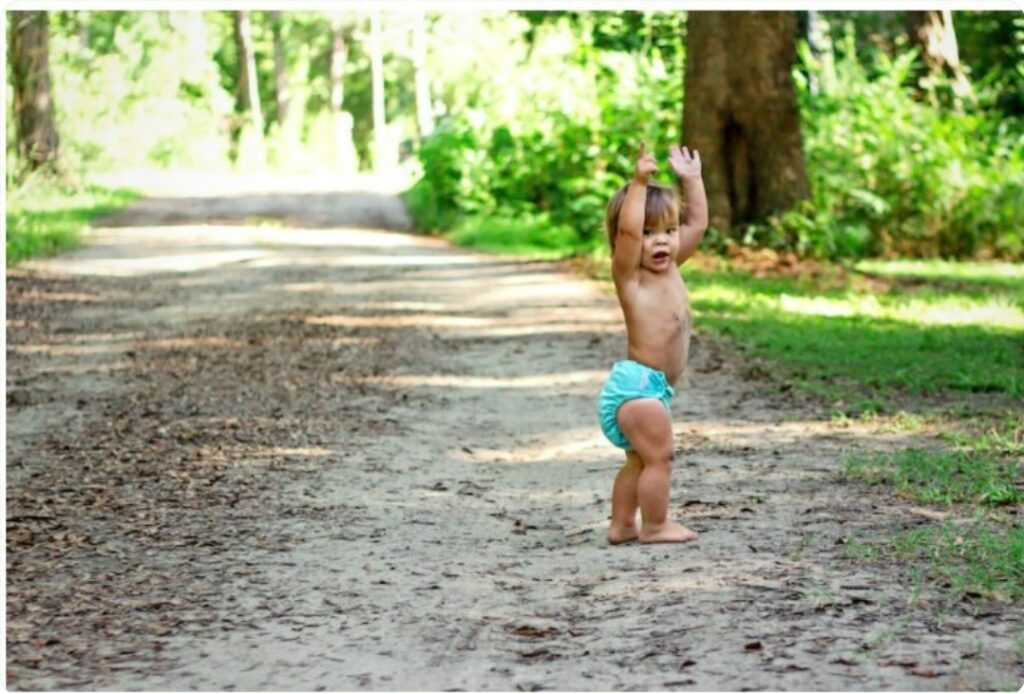So many people shy away from trying out cloth diapers because they’re confused or scared it will be hard. Here’s a great guest post from our friend Jessica at BebeAuric, a local Montreal cloth diapering service that will demystify the whole process for you! Birds and Bees loves cloth diapers and totally recommend you give them a second chance!
“I was overjoyed to find out that I was pregnant, that what I had been hoping for for months was going to be a reality. As the pregnancy glow and the nausea set in, so did the overwhelm of information. Truthfully, I knew so little about babies! How worried do I need to be about jaundice? How many onesies do I need? Babies poop, maybe they spit up, they nap, or something? What do I do with a baby all day? What I did know, though, was that I wanted to diaper my baby in cloth, as much as I could.
Why would someone diaper their baby in cloth? Isn’t it a pain, isn’t it messy, don’t babies get more diaper rash with cloth diapers? The environmental case is very strong, but disposables are so easy!
Let’s clear up some of these myths.
Diaper Rash
First, babies are not more prone to diaper rash in cloth! In fact, the chemicals in disposable wipes are more often the culprit of diaper rash! When it comes to cloth diapering, diaper rash can be caused by ammonia buildup in the diapers, or simply if the baby is not changed frequently enough. So, a good cleaning routine is needed, or you can use a diaper service like I did.
More trouble than disposables?
Is it a pain, is it messy? Well babies are a bit messy to begin with, and as to whether or not it’s a pain – there are lots of new things to learn when we become new parents and for me it was just one of those new things. In my case, using a service made all the difference in being able to diaper in cloth but lots of parents become accustomed to the extra washing and it becomes part of the routine, just like any other household task.

Environmental cost
Intuitively, we know that it’s better to wash and reuse something than to throw it away. But why? What’s wrong with trash, we bring it to the curb each week and rarely give it a second thought.
I am reminded of a quote by Annie Leonard, “There is no such thing as away. When we throw something away it must go somewhere.” And this is the case with diapers, too. They go to a landfill and take 350-500 years to decompose (we think)… and it never truly decomposes, as it contains plastic, which breaks down into smaller and smaller pieces and becomes microplastics, which goes into the land and the water that we depend on to survive… all for a few hours on a baby’s bum. Diapers are essentially a single-use plastic that will be around for hundreds of years after we are even gone. Yikes.
Disposable diapers need to be manufactured. Could you turn some wood and a cup of crude oil into a diaper? No, you’d need tons of machines to help you do that! It actually takes a lot of wood, water, crude oil, electricity, and synthetic chemicals to produce a disposable diaper. In short, it takes vastly more renewable and non-renewable resources to produce a disposable diaper than it does to produce and wash a cloth diaper. (And yes, even including the water needed to wash the diapers!)
What about the impacts on the baby?
Babies who are diapered in cloth tend to potty train earlier. Why? Because unlike in disposables, they actually feel the wetness and thus make the connection between needing to pee and feeling the resulting wetness. They get to know their little bodies better than if that wetness is immediately wicked away, as is the case with disposables.
Cloth diapering is definitely the more natural option. True, disposable diapers are soooo absorbent… but it’s not magic, it’s chemicals! That includes sodium polyacrylate, which has been banned from tampons due to concerns about toxic shock syndrome. While these chemicals are not directly on the baby, the baby will spend 24 hours a day, 7 days a week, for potentially 3 years, with this and other chemicals within an inch of their delicate skin (not to mention ending up in a landfill seeping into the ground).
For boys, cloth diapers means a lower scrotal temperature, which can be favourable for their fertility later in life.
Cloth diapering is easier (and cuter!!) than ever before, and they are far and away better than the diapers of our parents and grandparents. Innovations have been made on new diapering systems, and tips, tricks and secrets about how to keep them clean and maintain a routine have been shared online. My trick was simple, I depended on BabyAuric Diaper Service to do the dirty work for me. I never once had to think about rinsing or soaking and I received a bag full of hospital-grade laundered diapers each week. It was very easy to maintain my cloth diapering consistently and over the long haul!
I hope that this information has empowered you with the knowledge that there are options other than Pampers and Huggies, and that you can join the army of new parents who are diapering their babies in cloth and loving it!”
Thanks, Jess! If you gjuys are considering it, contact BebeAuric for more information!

